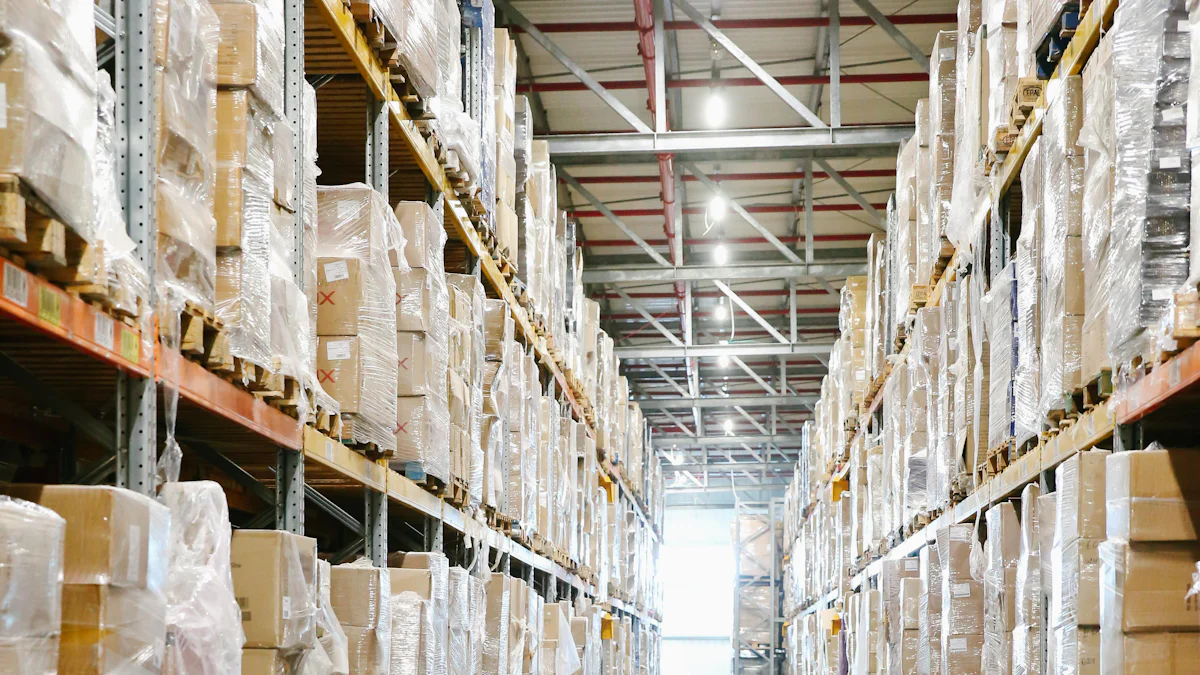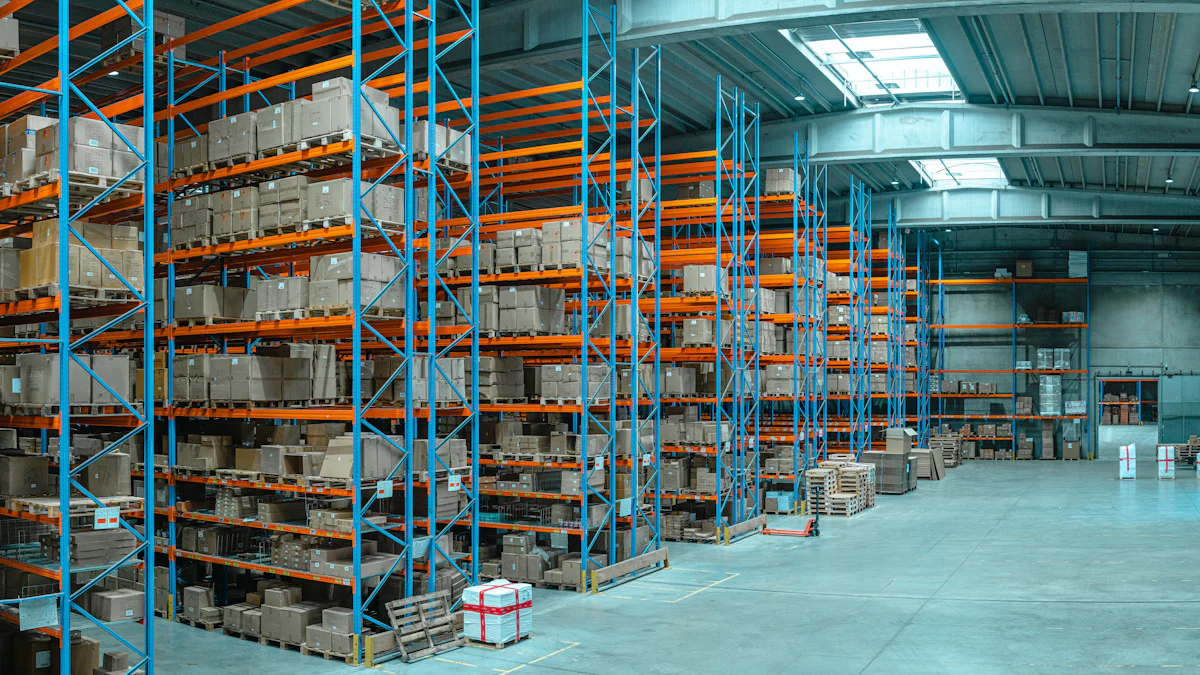
Every time you receive a package at your doorstep or warehouse, a complex yet efficient process works behind the scenes. This process ensures that goods delivered to you arrive safely and on time. From the moment you place an order, a series of coordinated steps begins. Each step involves careful planning, advanced technology, and skilled professionals. Understanding these steps allows you to appreciate the effort and precision involved in bringing products directly to your hands.
Key Takeaways
- The delivery process begins with you placing an order, highlighting the importance of providing accurate information for smooth execution.
- Efficient inventory management ensures that the correct product is selected and prepared for shipping, minimizing errors.
- Packaging is crucial for protecting items during transit, with eco-friendly materials increasingly being used to support sustainability.
- Various transportation methods, including trucks, trains, and drones, play a vital role in ensuring timely and reliable deliveries.
- Distribution centers enhance delivery efficiency by storing products closer to customers and optimizing delivery routes.
- Last-mile delivery presents unique challenges, but innovative solutions like real-time tracking and local delivery hubs help overcome them.
- Choosing a reliable delivery service with good tracking features can significantly enhance your overall shopping experience.
Placing the Order
How Customers Initiate the Process
The journey of goods to your doorstep or warehouse begins with you. When you decide to purchase a product, you initiate the process by placing an order. This can happen through various platforms, such as online stores, mobile apps, or even in-person requests. You browse through available products, compare options, and select the items that meet your needs.
Once you finalize your selection, you proceed to the checkout page. Here, you provide essential details like your delivery address, contact information, and any specific instructions for the shipment. These details ensure that the seller knows exactly where and how to deliver your order. The accuracy of the information you provide plays a critical role in the smooth execution of the delivery process.
Order Confirmation and Payment Methods
After submitting your order, the system verifies the details and confirms its receipt. You typically receive an order confirmation message or email. This confirmation includes important information, such as the order number, estimated delivery date, and a summary of the items purchased. It serves as proof that your order has been successfully placed.
Next, you complete the payment process. Most platforms offer multiple payment methods to suit your preferences. These may include credit or debit cards, digital wallets, bank transfers, or cash on delivery. Each method ensures secure transactions, protecting your financial information.
Once the payment is processed, the seller begins preparing your order for the next steps. At this stage, you might also receive updates or tracking details, allowing you to monitor the progress of your purchase. This transparency helps you stay informed and reassured about the status of your order.
Order Processing and Packaging
Inventory Management and Stock Allocation
Once your order is confirmed, the seller's system checks the inventory to ensure the product is available. This step, known as inventory management, involves tracking stock levels in real time. Advanced software helps sellers locate the exact warehouse or storage facility where your item is stored. This ensures that the product is ready for the next stage without delays.
Stock allocation happens next. The system assigns your order to a specific batch of products. This process ensures that the correct item is picked from the inventory. Sellers prioritize accuracy during this step to avoid errors. For example, if you ordered a specific size or color, the system ensures that the right variant is selected. Proper stock allocation minimizes mistakes and keeps the process efficient.
Packaging and Labeling for Safe Transit
After the product is picked from the inventory, it moves to the packaging area. Here, workers or automated systems prepare the item for shipping. Packaging serves two main purposes: protecting the product and ensuring it reaches you in perfect condition. Fragile items receive extra care, such as bubble wrap or foam padding, to prevent damage during transit.
Labeling is equally important. Each package gets a label with essential details like your address, a barcode, and tracking information. These labels help delivery personnel identify your package and ensure it reaches the correct destination. Clear and accurate labeling reduces the chances of misdelivery.
Sellers often use eco-friendly materials for packaging to reduce environmental impact. You might notice recyclable boxes or biodegradable fillers in your deliveries. This approach not only protects your product but also supports sustainability efforts.
Transportation and Logistics of Goods Delivered

Modes of Transportation
The journey of goods delivered to your doorstep or warehouse relies on various transportation methods. Each mode plays a vital role in ensuring efficiency and reliability. Trucks dominate ground transportation, handling most deliveries within cities and across states. They provide flexibility and can navigate urban areas with ease. For longer distances, trains offer a cost-effective solution. They carry large volumes of goods, making them ideal for bulk shipments.
Air freight becomes essential when speed is a priority. It ensures rapid delivery, especially for time-sensitive items or international orders. Ships handle the majority of global trade. They transport goods across oceans, making them indispensable for international commerce. While slower than air freight, they accommodate massive quantities at lower costs.
Emerging technologies are also transforming transportation. Drones and autonomous vehicles are beginning to play a role in last-mile delivery. These innovations aim to reduce delivery times and improve efficiency. By understanding these modes, you can appreciate the complex logistics behind every package you receive.
Role of Distribution Centers and Route Optimization
Distribution centers act as critical hubs in the delivery process. They receive goods from manufacturers or suppliers and prepare them for final delivery. At these centers, workers sort and organize items based on their destinations. This step ensures that each package reaches the correct location without delays.
Route optimization enhances the efficiency of goods delivered to you. Advanced software analyzes factors like traffic, weather, and delivery locations. It calculates the fastest and most efficient routes for drivers. This reduces fuel consumption and ensures timely deliveries. For example, a delivery truck may follow a route that minimizes backtracking, saving both time and resources.
Distribution centers also help manage inventory. They store products closer to customers, reducing the distance goods need to travel. This proximity speeds up delivery times and improves customer satisfaction. By combining efficient distribution centers with optimized routes, companies ensure that your packages arrive quickly and reliably.
Final Delivery to Doorstep or Warehouse

Last-Mile Delivery Challenges and Solutions
The last-mile delivery stage often presents unique challenges. This phase involves transporting goods from a distribution center to your doorstep or warehouse. Urban areas frequently experience traffic congestion, which delays deliveries. In rural regions, long distances between delivery points can complicate the process. These obstacles make last-mile delivery one of the most complex steps in ensuring goods delivered to you arrive on time.
To overcome these challenges, companies adopt innovative solutions. Many use advanced tracking systems to provide real-time updates. These systems allow you to monitor your package's location and estimated arrival time. Delivery services also employ route optimization tools to identify the fastest paths. This reduces delays and ensures efficient use of resources.
Some businesses now rely on local delivery hubs. These hubs store goods closer to your location, minimizing travel time. Additionally, emerging technologies like drones and autonomous vehicles are beginning to revolutionize last-mile delivery. These advancements aim to improve speed and reliability while reducing costs. By addressing these challenges, companies ensure that goods delivered to you meet your expectations.
Bulk Shipments and Warehouse Deliveries
Bulk shipments follow a different process compared to individual deliveries. When you order large quantities or manage a warehouse, the delivery system adjusts to accommodate your needs. Bulk shipments often involve pallets or containers filled with multiple items. These shipments require careful planning to ensure safe and efficient transportation.
Warehouses play a crucial role in handling bulk deliveries. Upon arrival, workers unload and inspect the goods. They verify the shipment against the order details to ensure accuracy. Proper documentation helps track the inventory and maintain records. Once verified, the goods are stored in designated areas within the warehouse.
For businesses, bulk shipments offer cost advantages. Transporting large quantities at once reduces per-unit shipping costs. This method also ensures that your warehouse remains well-stocked, preventing delays in fulfilling customer orders. Efficient handling of bulk deliveries ensures that goods delivered to your warehouse are ready for immediate use or distribution.
Benefits of Efficient Delivery Systems
Timely and Reliable Deliveries
Efficient delivery systems ensure that goods reach you on time. When you place an order, you expect it to arrive within the promised timeframe. Reliable delivery services meet these expectations by streamlining every step of the process. They use advanced tracking tools to monitor shipments and avoid delays. This precision builds trust and ensures that goods delivered to your doorstep or warehouse meet your schedule.
Timely deliveries also benefit businesses. When companies fulfill orders quickly, they maintain customer satisfaction and loyalty. For you, this means fewer disruptions and a smoother shopping experience. Whether it’s a single package or a bulk shipment, efficient systems prioritize speed and reliability.
Cost-Effectiveness and Sustainability
Efficient delivery systems reduce costs for both businesses and customers. Companies save money by optimizing routes, minimizing fuel consumption, and using resources wisely. These savings often translate into lower shipping fees for you. Bulk shipments, for example, lower per-unit costs, making large orders more affordable.
Sustainability is another key advantage. Many delivery services now focus on eco-friendly practices. They use electric vehicles, biodegradable packaging, and energy-efficient warehouses. These efforts reduce the environmental impact of goods delivered to your location. By choosing services that prioritize sustainability, you contribute to a greener future while enjoying cost-effective solutions.
Enhanced Customer Experience
A well-organized delivery system enhances your overall experience. Real-time tracking updates keep you informed about your package’s journey. You can plan your day better when you know exactly when to expect a delivery. Clear communication and accurate timelines reduce uncertainty and frustration.
Efficient systems also handle issues like damaged or misplaced items effectively. When problems arise, quick resolutions ensure your satisfaction. For businesses, this means fewer complaints and stronger customer relationships. For you, it means a seamless and enjoyable shopping experience. Every step, from order placement to final delivery, works together to meet your needs and exceed your expectations.
The journey of goods delivered to your doorstep or warehouse reflects a well-coordinated process. Each step, from placing an order to receiving the package, involves precision and teamwork. Efficient delivery systems ensure timely arrivals, cost savings, and dependable service. These benefits enhance your experience and support businesses in meeting customer expectations. When selecting a delivery service, focus on reliability, tracking features, and customer feedback. These factors help you make informed decisions and enjoy a seamless delivery experience. Understanding this process empowers you to appreciate the logistics behind every package.
FAQ
What is the first step in the delivery process?
The delivery process begins when you place an order. This step involves selecting your desired products, providing accurate delivery details, and completing the payment. Once the seller confirms your order, the process moves to inventory management and packaging.
How does inventory management ensure my order is accurate?
Inventory management uses advanced systems to track stock levels in real time. These systems locate the exact warehouse where your item is stored. They also ensure that the correct product, size, or variant is picked for your order, reducing errors and ensuring accuracy.
Why is packaging important for deliveries?
Packaging protects your items during transit. It ensures that your products arrive in perfect condition. Fragile items receive extra care with materials like bubble wrap or foam padding. Labels on the package provide essential details, such as your address and tracking information, to ensure proper delivery.
What are the main modes of transportation for deliveries?
Deliveries rely on several transportation methods. Trucks handle most local and regional deliveries. Trains transport bulk shipments over long distances. Air freight ensures fast delivery for urgent or international orders. Ships carry large quantities of goods across oceans for global trade.
How do distribution centers improve delivery efficiency?
Distribution centers act as hubs where goods are sorted and organized based on their destinations. They store products closer to customers, reducing travel distances. These centers also use route optimization tools to ensure that deliveries are timely and efficient.
What challenges affect last-mile delivery?
Last-mile delivery faces issues like traffic congestion in urban areas and long distances in rural regions. These challenges can delay deliveries. Companies address these problems with solutions like route optimization, local delivery hubs, and advanced tracking systems.
How do bulk shipments differ from regular deliveries?
Bulk shipments involve transporting large quantities of goods, often using pallets or containers. These shipments require careful planning to ensure safe and efficient handling. Warehouses play a key role in receiving, inspecting, and storing bulk deliveries.
What benefits do efficient delivery systems offer?
Efficient delivery systems provide timely and reliable service. They reduce costs through optimized routes and resource management. Many systems also focus on sustainability by using eco-friendly practices, such as electric vehicles and biodegradable packaging.
How can I track my package during delivery?
Most delivery services offer tracking tools. These tools provide real-time updates on your package's location and estimated arrival time. You can access tracking information through emails, apps, or the delivery service's website.
What should I consider when choosing a delivery service?
When selecting a delivery service, focus on reliability, tracking features, and customer reviews. Look for services that prioritize timely deliveries, secure handling, and clear communication. These factors ensure a smooth and satisfying delivery experience.
Table of Contents
- Key Takeaways
- Placing the Order
- Order Processing and Packaging
- Transportation and Logistics of Goods Delivered
- Final Delivery to Doorstep or Warehouse
- Benefits of Efficient Delivery Systems
-
FAQ
- What is the first step in the delivery process?
- How does inventory management ensure my order is accurate?
- Why is packaging important for deliveries?
- What are the main modes of transportation for deliveries?
- How do distribution centers improve delivery efficiency?
- What challenges affect last-mile delivery?
- How do bulk shipments differ from regular deliveries?
- What benefits do efficient delivery systems offer?
- How can I track my package during delivery?
- What should I consider when choosing a delivery service?

